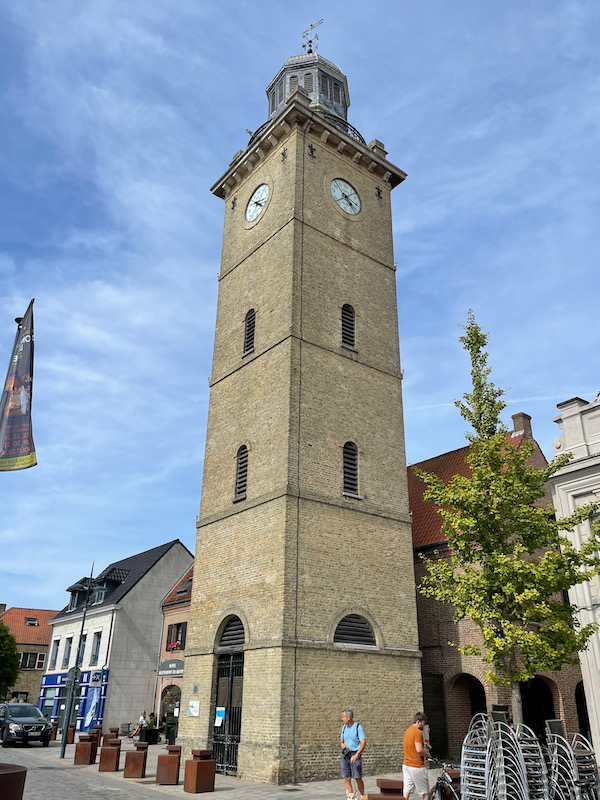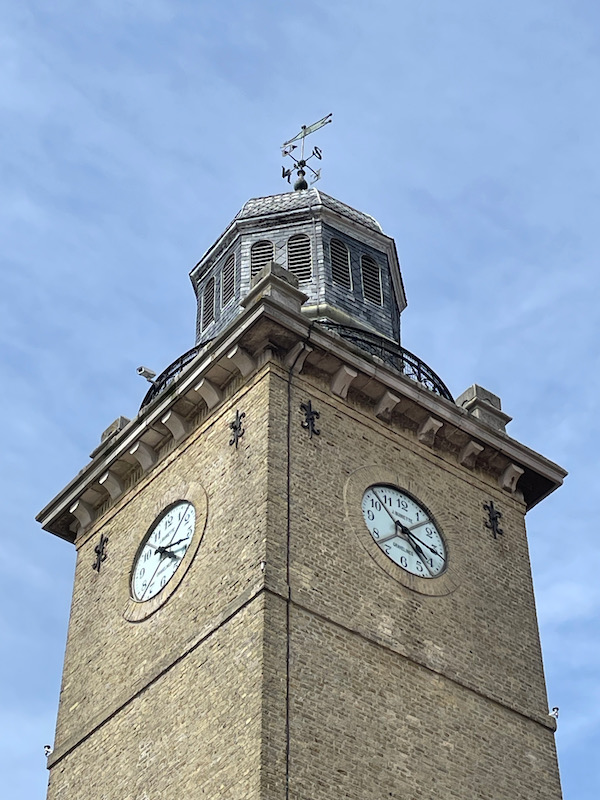Our Blog - Summer 2024 Trip - Gravelines, France
The town lies at the mouth of the river Aa 15 miles southwest of Dunkirk (yes, the river name is literally Aa). In the early 12th century, the town of Saint-Omer was an important port in western Flanders. Silting gradually cut it off from the North Sea, resulting in the construction of a canal to North Sea coast at what is now the town of Gravelines. The name is derived from the Dutch Gravenenga, meaning the Count's Canal. Because it was on the western border of Spanish territory in Flanders, it was heavily fortified, some of which remains.
The town was captured and recaptured several times by the English, French, and Spanish until it was finally annexed to France in the Treaty of the Pyrenees of 1659. There were fortification walls before that, but with the retreat of the border, the walls lost their defensive value.Vauban fortified the town again with the current star-shaped citadel appearance.
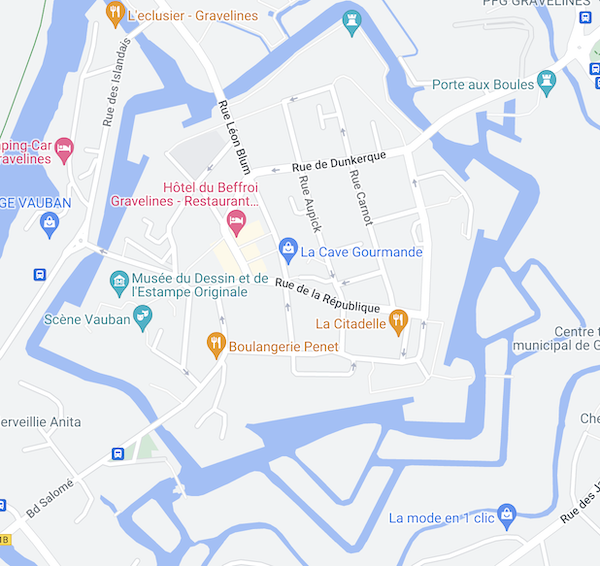
A couple pieces of trivia ... the population is around 11K and relatively young (helped with the opening of a nuclear power plant). The power plant is the 2nd largest in Europe, after Zaporizhia in Ukraine (not sure it is still 2nd or has pass over Zaporizhia with the war). In 2013, a large data center with ISP/Cloud computing opened, at that time the largest in Europe (this may also have helped the relatively young population).
We did a walk around a section of the ramparts and hopefully these pictures will give you an idea of the fortifications. As you can see, you can rent a boat and go all the way around the ramparts on the small waterways.
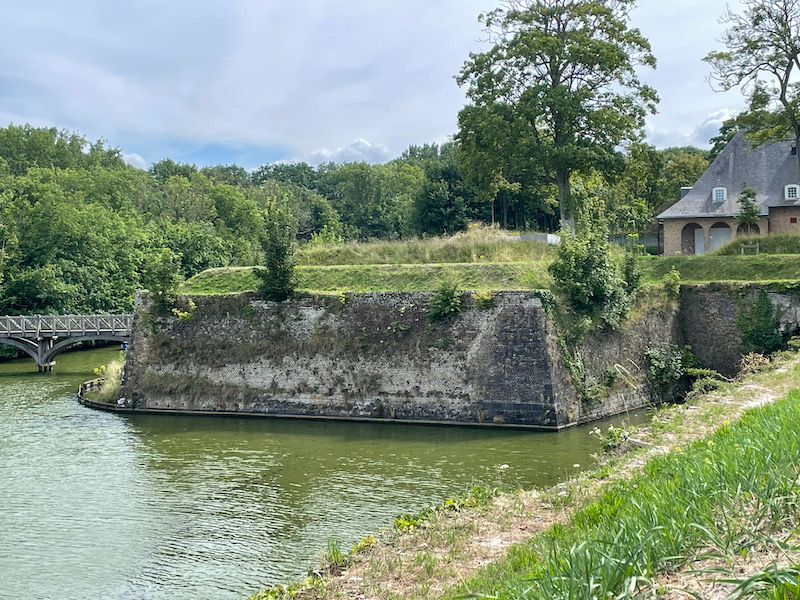
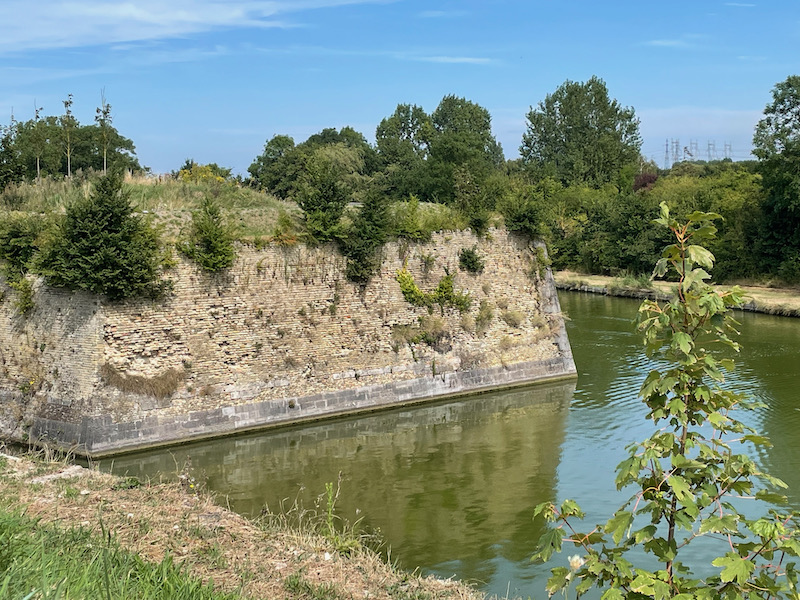
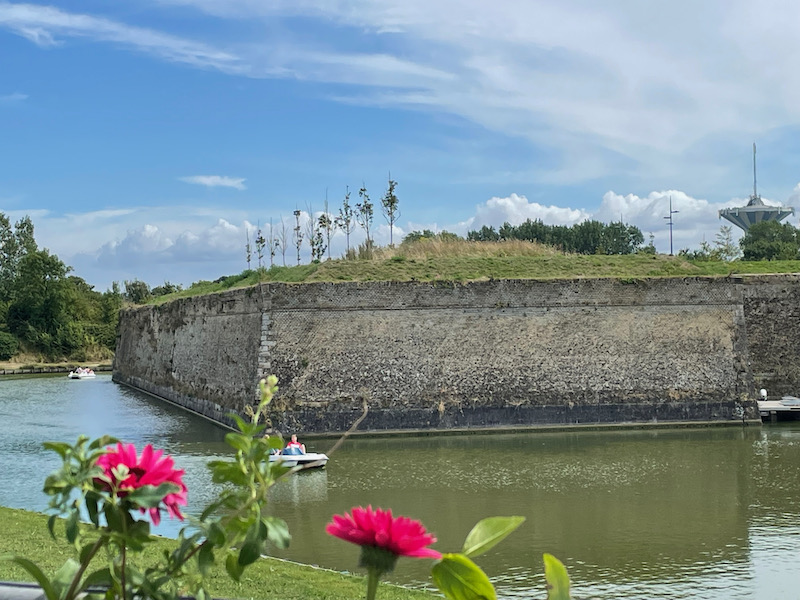

La Citerne D'eau is the old water cistern, built in 1724. Water flowed from the aqueducts, was filtered by decantation, and then the drinkable water was stored. The cistern was used for the drinking water for the military and the locals living here. It could hold 1,420,000 liters of water, which came from its own roof as well as those of the church next door and 2 nearby barracks.
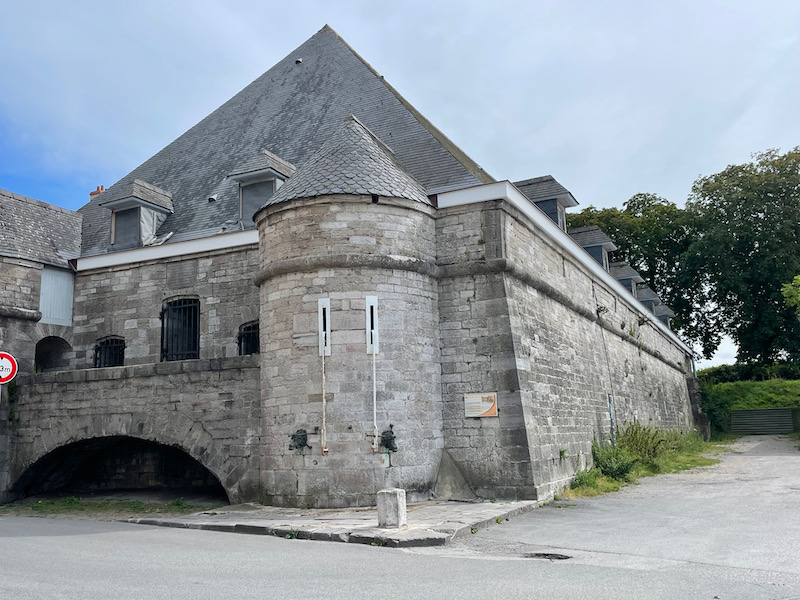
The Saint Willibrord church was built in 1598 but was largely destroyed by a hurricane during the First Empire. Today, only the facade is original, with a remarkable Renaissance portal. It is built in a style called hallekerque (hall church) which mean that the nave and aisles are of approximately equal height.
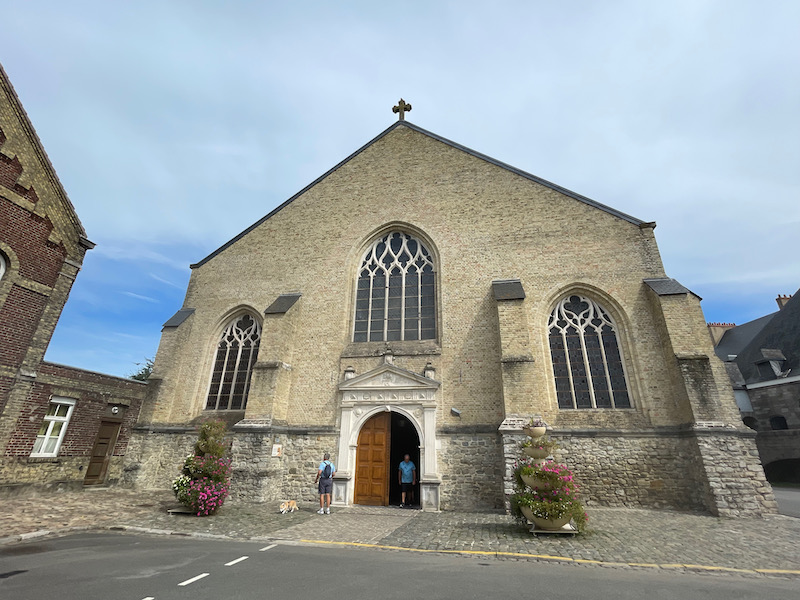
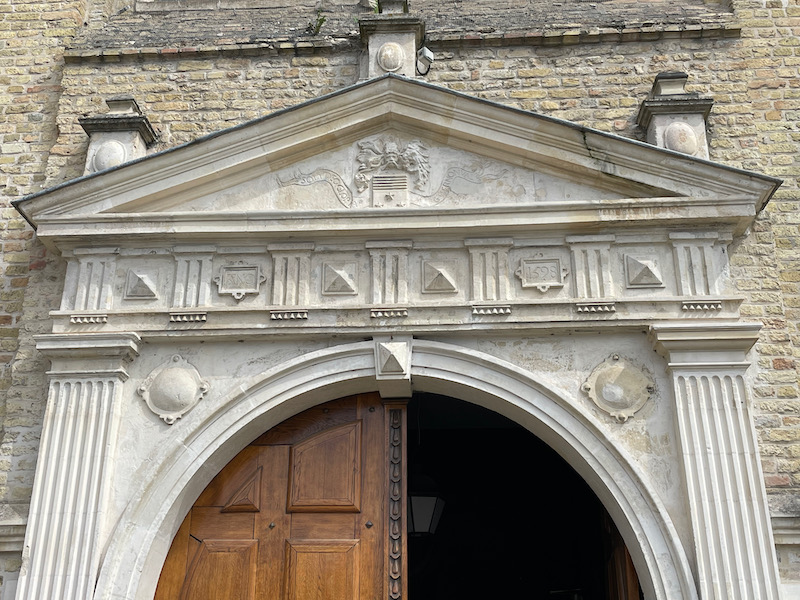
Here you can see the Gothic arches that separate the nave from the side aisles, but there are no side chapels. There is quite a bit of carved wood paneling and an interesting statue of Joan of Arc. You can also see the carved wooden pulpit and an altarpiece from the 17th century.
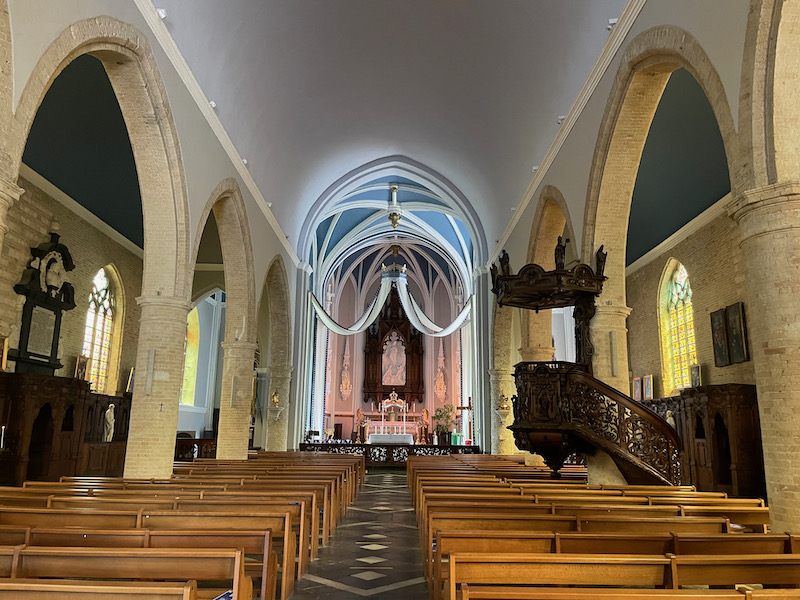
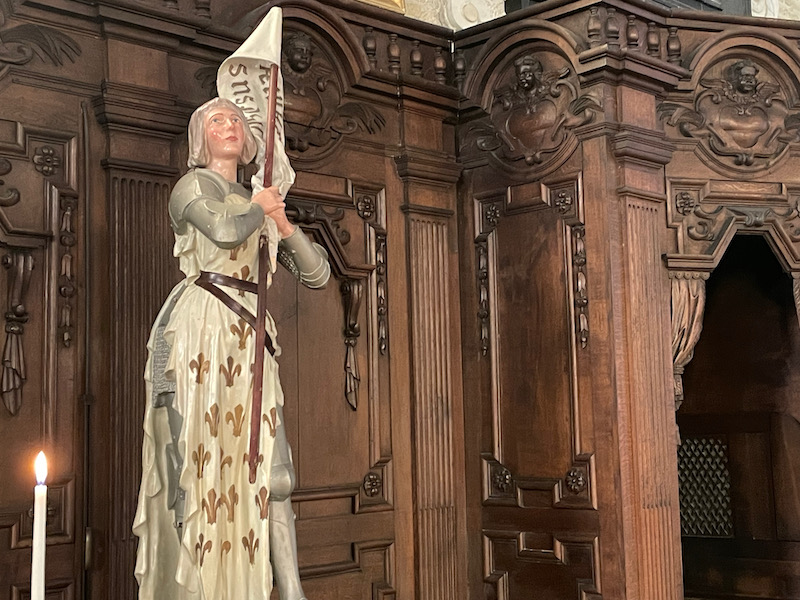
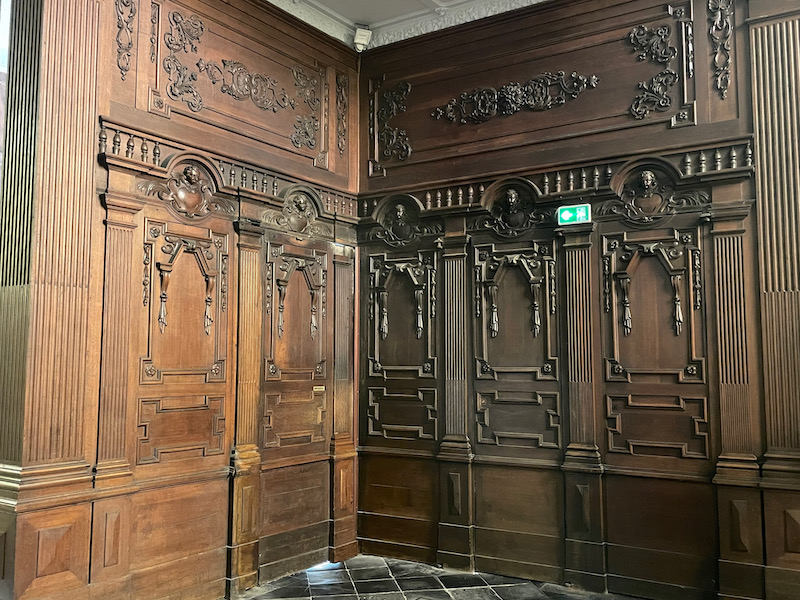
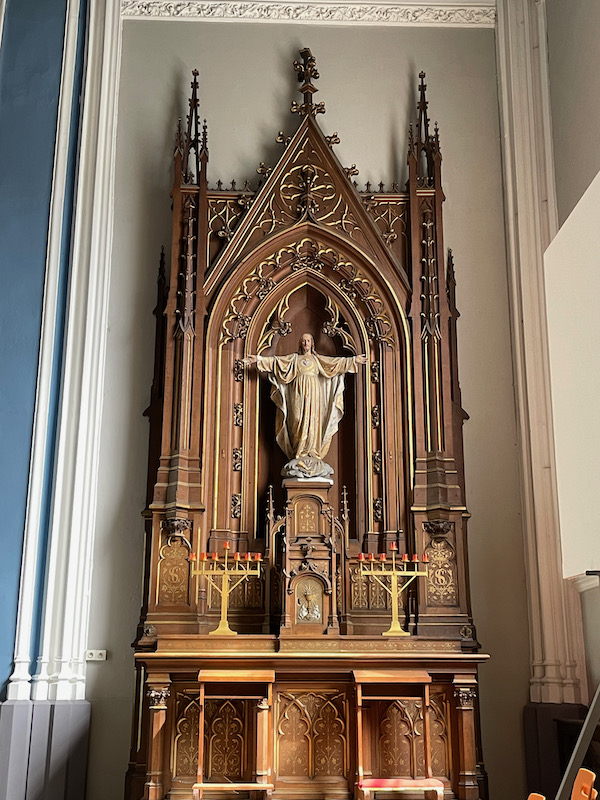
The main altarpiece has carved wood surrounding a bas-relief.
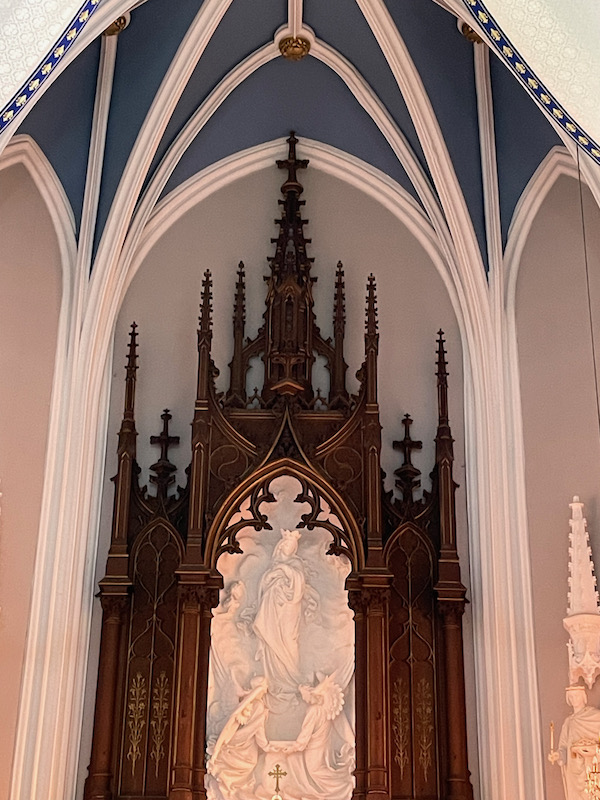
The Varennes barracks was built in 1737, and at that time, it could house nearly 600 soldiers. It is an imposing 4-story building made of yellow bricks and sandstone. It is nice to see buildings like this transformed into something useful ... today, it has been converted into city housing.
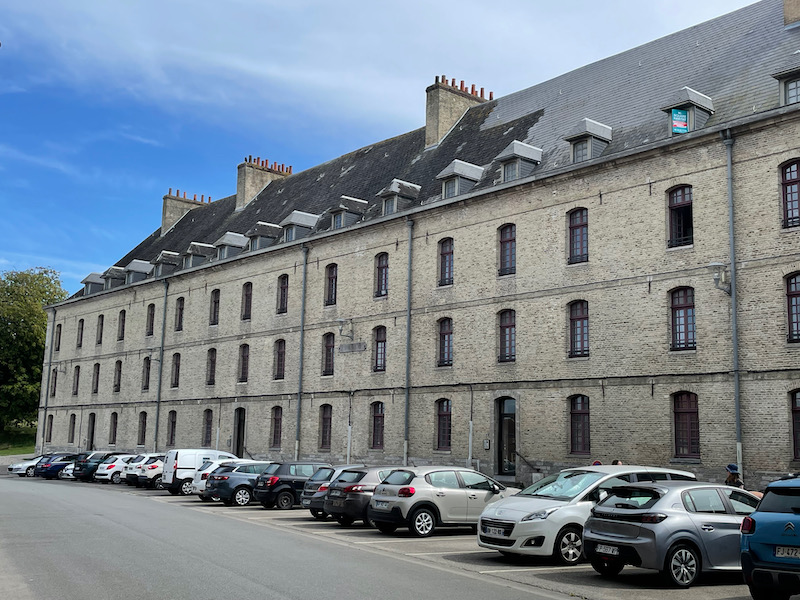
The Belfry was built for the first time in 1608, then rebuilt between 1822 and 1827. It is one of the 23 belfries which were classified UNESCO World Heritage "belfries of Belgium and France". There are 3 floors and it is topped by a polygonal lantern.
